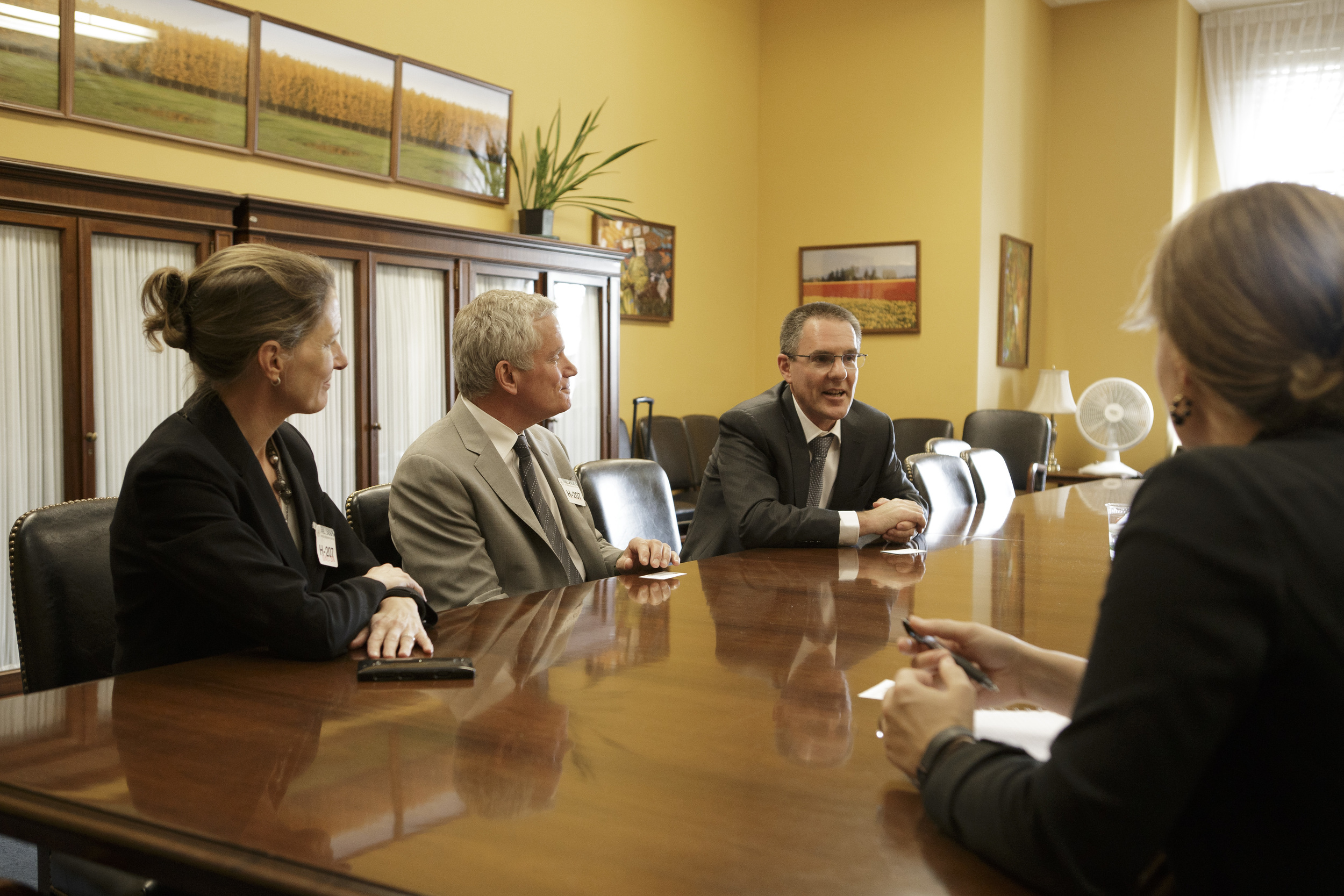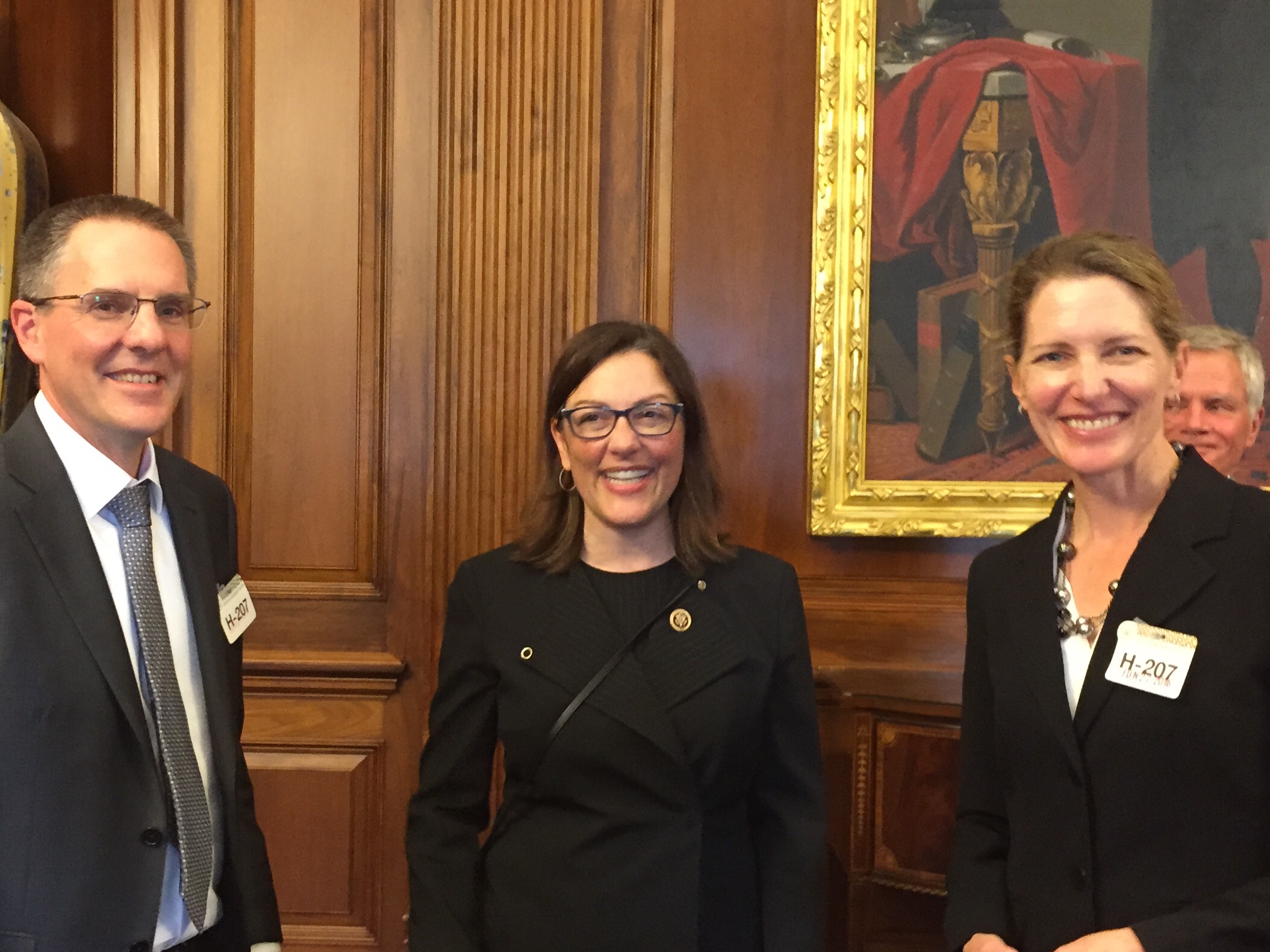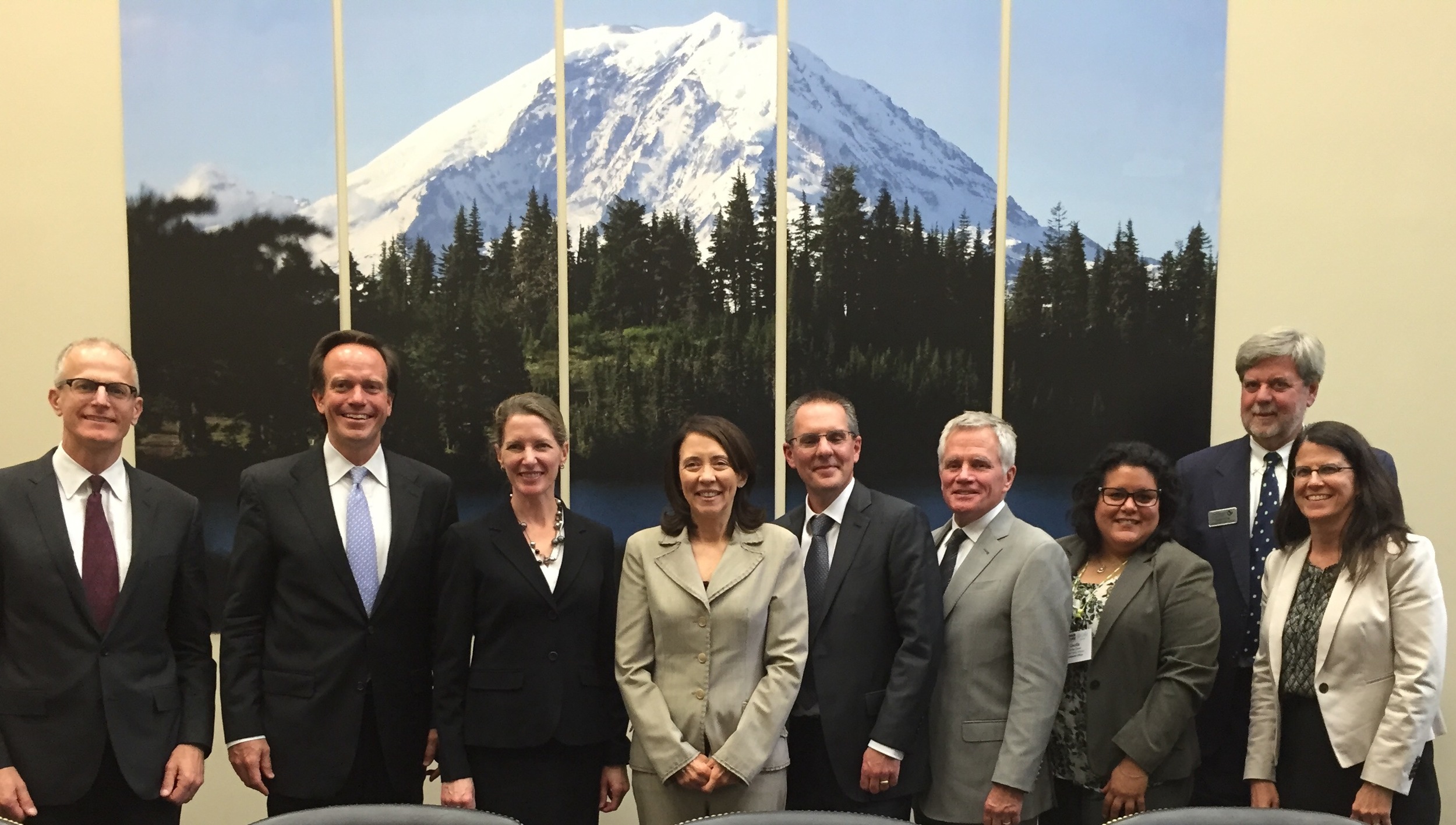Written by Kathleen Hebert, Trustee for The Nature Conservancy in Washington
Recently, I joined 148 Conservancy trustees from across the United States and six international programs in Washington, DC, to speak up for the Power of Nature.
In a single day, Conservancy trustees and staff made the case in face-to-face meetings with 175 elected officials. It was unbelievably motivating to take part in such a powerful statement on behalf of the Conservancy and conservation.
Washington Board Chair Byron Bishop, Scott Wyatt and I joined State Director Mike Stevens and Federal Government Relations Director Cathy Baker to meet with five Members of Congress: Sen. Maria Cantwell, Sen. Patty Murray, and Reps. Cathy McMorris-Rodgers, Derek Kilmer and Suzan DelBene. We also met with the chief of staff for Rep. Denny Heck.
I had seen the stunning U.S. Capitol and the Mall before, but it was my first time inside the halls of our Capitol. It was a rare opportunity to join the team from Washington state and key staff from our World Office for an inside look at the progress of key conservation bills for this session of Congress.
This session’s Energy Bill includes provisions that authorize important programs for wildlife protection, recreation on public lands and reauthorization of the Land and Water Conservation Fund (LWCF). It also focuses on critical upgrades to the nation’s energy grid and energy efficiency, which, if enacted, would reduce carbon emissions by as much as 150 million tons per year, or the equivalent of taking 22 million cars off the road. These core measures represent initial steps to address climate change that have bipartisan support.
Advocating on the Hill was both inspiring and exhausting. It was a brief glimpse into the political and time pressures that come with being a Member of Congress. Meetings were quick and to the point. In two cases, to hold our meetings staff had to pull their Representative away from the House Democrat’s spontaneous “sit-in” protest for gun control.
Despite tight schedules, it was clear they were glad to meet with us and listen to our core issues, and they were generous with the time they had. It was gratifying to hear their level of engagement and knowledge about everything from wildfire funding to LWCF.
I was privileged to join in discussions with experienced TNC staff, such as Nature Conservancy Director of Public Policy Lynn Scarlett, who was Deputy Secretary of the Interior under Pres. Bush, and the chair of the Conservancy’s global board, Craig McCaw, who founded McCaw Cellular right here in Washington state. I left feeling optimistic that our Congressional representatives and TNC shared common concerns, desired outcomes and a commitment to take action.
Outside the meetings on the hill, the TNC Leadership Summit was a valuable opportunity to meet trustees from all 50 states and numerous international programs.
I had the chance to hear first-hand from Aurelio Ramos, the Managing Director of our Latin America program, about projects that link reforestation and support for local economies in the Brazilian rainforest, and to find out about the California chapter’s progress in creating new carbon credits for working forests.
A highlight of the general session was an encouraging speech by Sen. Sheldon Whitehouse (D-Rhode Island) about climate change and generating the political will to change. Even casual discussions during breaks gave me new insights into thinking about lands and programs in Washington state and created connections I will continue to foster.
As a first time participant, I came to DC full of energy and enthusiasm, but conscious of my inexperience. After three action-packed days, I left exhausted yet energized, daunted yet more optimistic than ever, and even more grateful to play a small part in TNC’s important work. Being on the Hill reminded me how critical local voices are to informing our elected officials’ actions. They rely on their constituents’ input about public policy.
The Nature Conservancy’s support not only of key historic programs like the Land and Water Conservation Fund, but of evolving issues such as energy grid modernization, provides new ways of thinking about the link between nature and our economy.

































